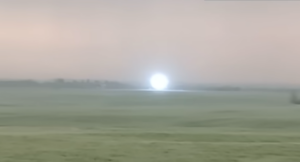The 2015-2016 Antarctic research season concluded March 12 following the redeployment of U.S. Air Force C-17 Globmaster III aircraft to Joint Base Lewis-McChord, Washington, and Stewart Air National Guard Base, New York, and LC-130 Skibird aircraft to the 109th Airlift Wing at Stratton Air National Guard Base, New York.
(Originally published at Pacific Air Forces)
This iteration of the operation marked the 60th Anniversary of Operation Deep Freeze (ODF), the military’s logistical support to the National Science Foundation-managed U.S. Antarctic Program (USAP), which first began in 1955.
Through six decades of continuous support, ODF has evolved to meet today’s logistics requirements of the USAP. Joint Task Force – Support Forces Antarctica, headquartered at Joint Base Pearl Harbor-Hickam, executes inter- and intra-theater airlift, tactical LC-130 deep field support, aeromedical evacuation support, search and rescue, sealift, seaport access, bulk fuel supply, port cargo handling and transportation requirements at NSF’s request in order to support the USAP.
“This has been a successful season that presented numerous challenges with weather, logistics, and maintenance,” said U.S. Air Force Col. Mark Doll, JTF-SFA deputy commander. “Every day, JTF-SFA personnel were confronted with choices and decisions to overcome the complexities of operating in the southern-most continent. All of this was accomplished by the Airmen, Sailors, Coast Guardsmen and Soldiers of JTF-SFA — a dedicated group of men and women working in an unforgiving environment. The high level of operational experience in polar environments, combined with the appropriate risk-mitigation procedures, led to the successful outcome of this season. Three words on the back of the Antarctica Service Medal say it best: COURAGE, SACRIFICE and DEVOTION.”
Throughout the 2015-2016 season, JTF-SFA directed more than 350 inter/intra-theater airlift missions, moving over 6.5 million pounds of material and transporting approximately 5,500 passengers.
The 139th Expeditionary Airlift Squadron, comprised of personnel and LC-130s from the 109th AW, delivered personnel, cargo and fuel to the South Pole and several other deep-field camps.
The 304th Expeditionary Airlift Squadron, comprised of personnel and a C-17 from the 62nd and 446th Airlift Wings from JBLM, provided strategic airlift into NSF’s McMurdo Station, Antarctica, as well as night-vision goggle capabilities to perform nighttime winter flights and offer emergency airdrop capabilities to the South Pole or any other location on the continent.
As part of the joint effort, the U.S. Coast Guard icebreaker POLAR STAR, a 399-foot polar class icebreaker with a 150-person crew, arrived in McMurdo Sound in January to cut the channel through seven-foot-thick ice to the McMurdo ice pier.
The POLAR STAR cleared a path for Military Sealift Command operations in the port and departed McMurdo Station in February with the final MSC ship to ensure clear passage to the open waters of the Ross Sea.
MSC charter cargo vessel OCEAN GIANT arrived in McMurdo toward the end of January to deliver 16.5 million pounds of cargo. The U.S. Navy’s Naval Cargo Handling Battalion-1 from Williamsburg, Virginia, performed the cargo offload.
Over 1,000 pieces of cargo were moved during the ship’s seven-day stop at the pier. Following the OCEAN GIANT’s departure, the MSC charter fuel tanker MEARSK PEARY arrived and completed the offload of 4.8 million gallons of fuel and departed McMurdo Station with the POLAR STAR in February.
Soldiers from the U.S. Army’s Public Health Command conducted inspections of the food storage, handling and service programs.
U.S. Air Force Brig. Gen. Dirk D. Smith, JTF-SFA commander, traveled to Christchurch, New Zealand, and Antarctica to witness operations and assess the redeployment phase. Smith visited operations and maintenance areas, interacted with military personnel from all work centers in Christchurch and “on the ice” at McMurdo and Amundsen-Scott South Pole stations and met with senior NSF officials.
“JTF-SFA is committed to sustaining an ‘active and influential presence’ in Antarctica, supporting NSF’s mission,” Smith said. “As the logistics backbone of the mission, our dedicated team of joined forces provides a mature, well-run program supporting world-class science in Antarctica. I was able to witness firsthand the harsh and challenging conditions faced by the JTF team and USAP members. It is clear these selfless professionals are doing critically important strategic work for our nation.”
JTF-SFA remains active to support short-notice requirements and to commence plans for the next season. The next Operation DEEP FREEZE event is a mid-winter C-17 (NVG equipped) mission in early June to McMurdo Station.






